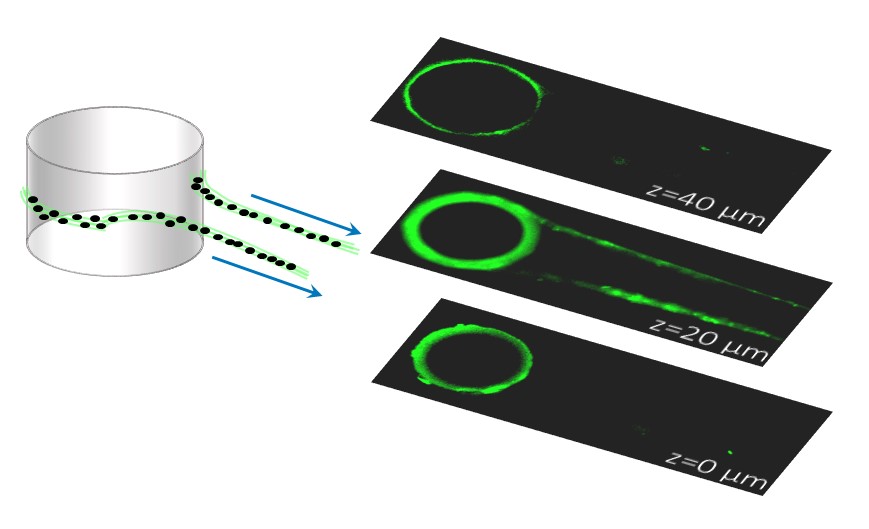Bacterial biofilms and streamers
Written By
Category
Research
Posted On
October 1, 2012
Share This

Bacteria often adhere to surfaces, where they develop polymer-encased communities (biofilms) that display enhanced resistance to antibiotic treatment and mechanical stresses. A better understanding of bacterial attachment to surfaces may lead to novel strategies for biofilm prevention, disruption and removal. Using micro-contact printing on glass substrates, we have developed a system to produce controlled biofilms by creating hydrophobic patches, which strongly favor bacterial attachment and on which biofilms rapidly develop. This technique has allowed us to study a number of processes, including the detachment of cells due to the passage of air plugs, and how cell-to-cell communication (quorum sensing) in biofilms depends on the size of the biofilm and the strength of the ambient flow. We are currently studying the development of filamentous biofilms (streamers), using pillars of different diameters as well as discontinuities in microfluidic channels as model systems to understand their formation in topographically complex environments, such as streams, groundwater and porous media.
For more information, please contact Eleonora Secchi (secchi@ifu.baug.ethz.ch) or Mehdi Salek (salekm@ethz.ch).